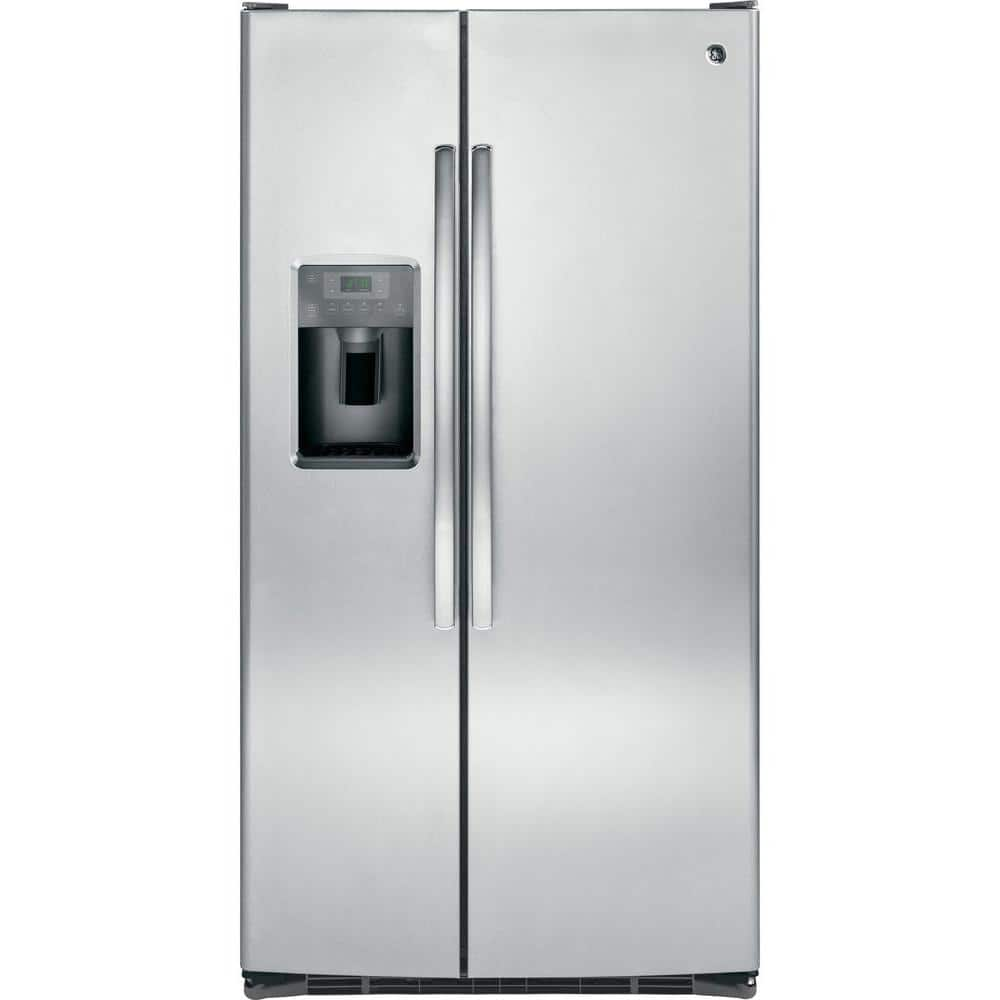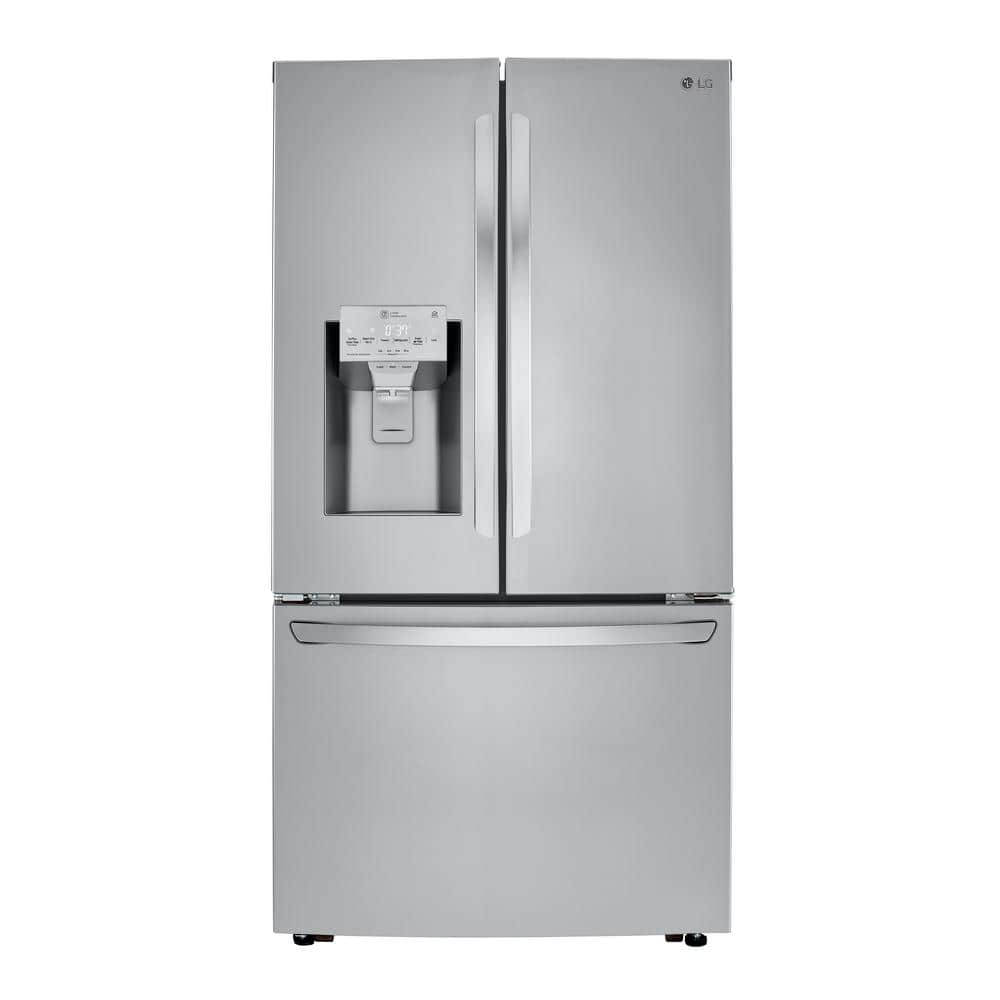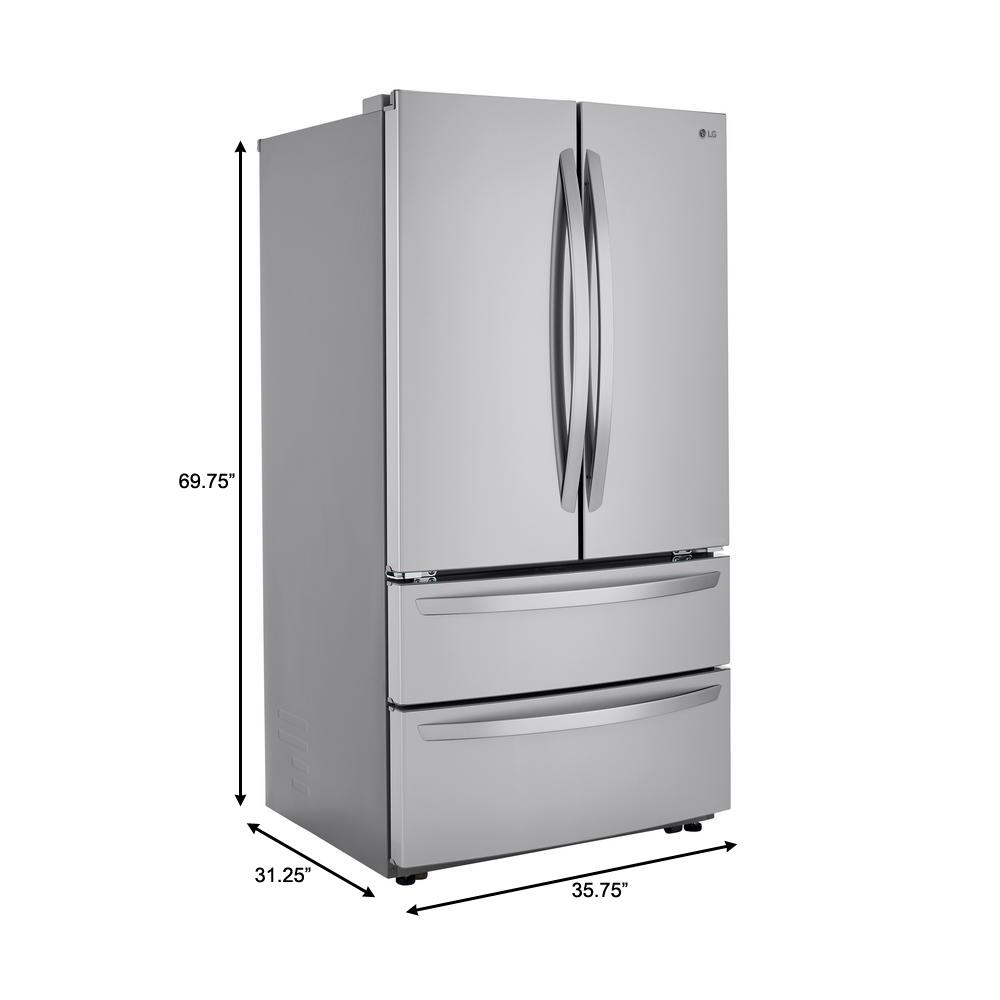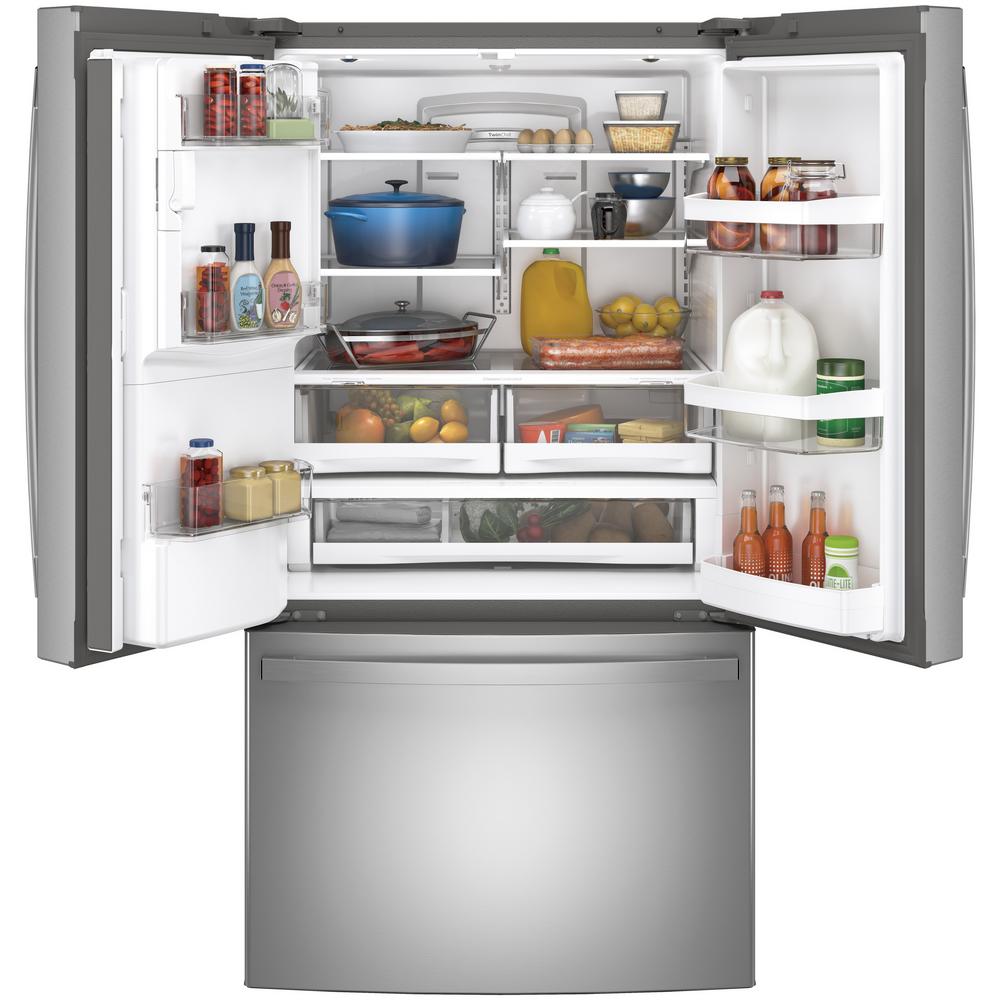GE 25.3 cu. ft. Side by Side Refrigerator in Stainless Steel
Adjustable door bins creates additional storage for large items. Strong and flexible shelf support. Factory installed ice maker ensures efficient ice production.
GE appliances provide up-to-date technology and exceptional quality to simplify the way you live. A bevy of features keep your food fresh and offer abundant storage. With a timeless appearance, this family of appliances adds allure and functionality to any kitchen.
- Tall dispenser provides access to filtered water and ice, making it easy to fill large containers
- Advanced water filtration uses XWF replacement filter
- Upfront electronic temperature controls with actual temperature display make temperature management simple
- Temperature management system uses multiple electronic controls and sensors to deliver even cooling throughout the fresh food section
- Adjustable spill-proof glass shelves with raised edges keep small spills from becoming big messes
- Adjustable humidity-controlled crispers with multi-level drawers help to preserve the freshness of fruits and vegetables with selectable humidity levels
- Adjustable door bins hold gallon containers with ease and free up valuable shelf space
- Extra-large 15.7 cu. ft. fresh food capacity provides ample refrigeration space, while 9.7 cu. ft. freezer capacity allows for additional cold storage
- FrostGuard technology in the freezer controls defrosting to help food retain flavor
- AutoEnergy saver cycles adjust to frequent door openings to save energy
- LED lighting – find all your favorite foods under natural-looking light
- 2 door side-by-side refrigerator has 1 fresh food door and 1 freezer door
- Limited 1-year entire appliance warranty
Additional information
| Depth (Excluding Handles) | 32.75 |
|---|---|
| Depth (Including Handles) | 32.25 |
| Depth (Less Door) | 28.5 |
| Depth With Door Open 90 Degrees (In) | 50.5 |
| Height to Top of Door Hinge (in.) | 69.5 |
| Height to Top of Refrigerator (in.) | 69 |
| Product Depth x Height x Width (in.) | 35.25 x 69.5 x 35.75 |
| Refrigerator Width (In.) | 35.75 |
| Certifications and Listings | UL Listed |
| Manufacturer Warranty | Limited 1-year entire appliance |






by Patrick
The motor can be loud at times.